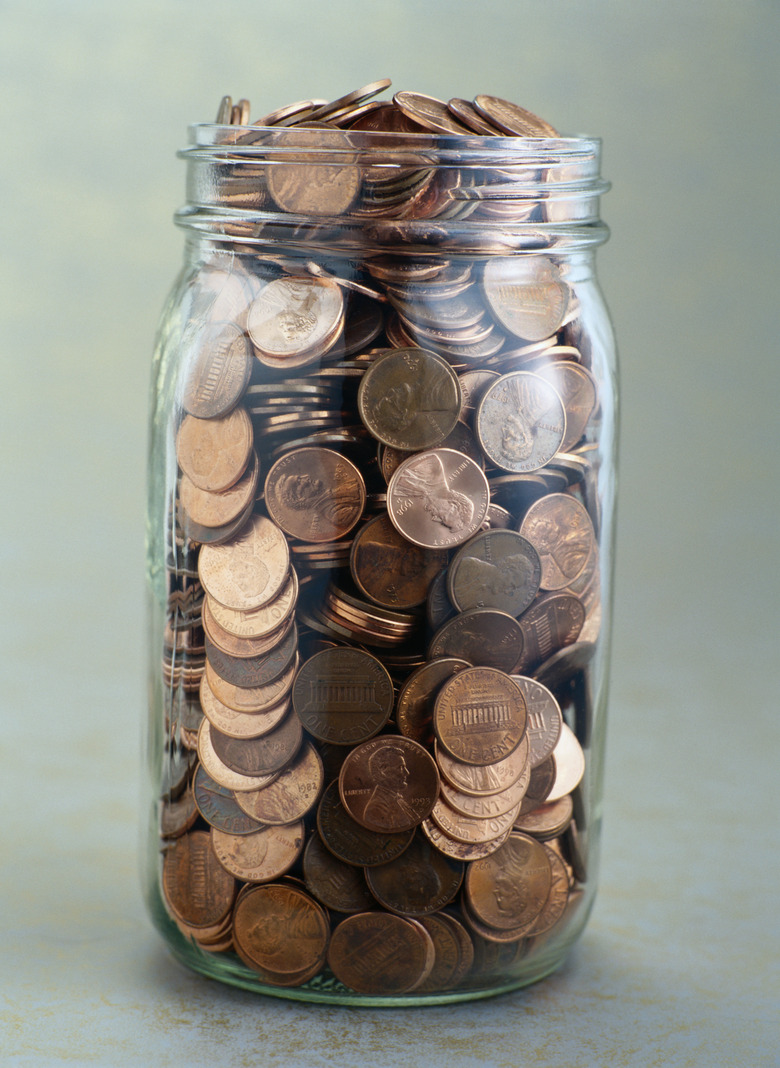Penny Tarnish Reverse Projects
Because pennies are made of copper, they don't actually rust. Over time, however, the copper becomes oxidized and tarnishes the surface, turning it a dark brown or blue-green. You can remove tarnish from a penny with any number of tarnish removers or industrial metal cleaners, but you can also effectively remove tarnish with one of several common, household liquids.
Salt and Vinegar Solution
Salt and Vinegar Solution
Pour 1/4-cup of vinegar and 1-teaspoon of salt into the plastic bowl and stir the mixture. Then, add the pennies and let them sit for about five seconds. Scoop out the pennies, and — one-by-one — rinse them under water and dry them with the paper towel. Each penny should end up bright and shiny. The reason the vinegar and salt works is because the vinegar is an acid, and when it combines with the salt it reacts to remove the copper oxide — the cause of their dark and dirty appearance — from the pennies.
Cola Cleaning
Cola Cleaning
You can also use soda to clean a penny, but this method comes with a caution. First, fill a small cup with cola — Coca-Cola, Pepsi or any standard cola will suffice — and then drop a penny into the cup. Let the penny soak overnight, and then take the penny out and rinse it off. The penny should be substantially cleaner than it was, but probably not as clean as if you had cleaned it with vinegar. If the penny was very tarnished to begin with, you can put the penny back in the cola for another few hours, but be careful: Cola contains carbonic, citric and phosphoric acid, and can eat away at the metal the longer you leave the penny submerged.
Lemon Juice Lightener
Lemon Juice Lightener
Lemon juice is another common liquid you can use to clean a penny. Fill a cup with lemon juice and then submerge the penny. Leave it submerged for five minutes, and then take it out and rub it with a paper towel. The penny should come out clean and shiny. You can even make a paste out of baking soda and water, and rub the penny with the paste to enhance the shine. Also, because the lemon juice doesn't contain carbonic and phosphoric acid like cola, you don't have to worry about the lemon juice eating away at the penny.
Condiment Cleansers
Condiment Cleansers
Tabasco, ketchup and taco sauce will also clean pennies, and you can perform a simple experiment to see which works best. Pour small amounts of each condiment into individual cups, and then place a few tarnished pennies beside each cup. Take a photograph of each cup and its pennies so you can compare them afterward. Submerge the pennies into each condiment, and leave them for approximately three minutes. Afterward, take the pennies out and rinse them off with water. Then, compare the pennies to see which condiment worked the best. The difference should be negligible: all three cleaners should work well because each contains vinegar and salt. However, you might notice a slight staining on the pennies cleaned with Tabasco sauce.
Cite This Article
MLA
Cascio, Christopher. "Penny Tarnish Reverse Projects" sciencing.com, https://www.sciencing.com/penny-tarnish-reverse-projects-13067/. 24 April 2017.
APA
Cascio, Christopher. (2017, April 24). Penny Tarnish Reverse Projects. sciencing.com. Retrieved from https://www.sciencing.com/penny-tarnish-reverse-projects-13067/
Chicago
Cascio, Christopher. Penny Tarnish Reverse Projects last modified March 24, 2022. https://www.sciencing.com/penny-tarnish-reverse-projects-13067/
